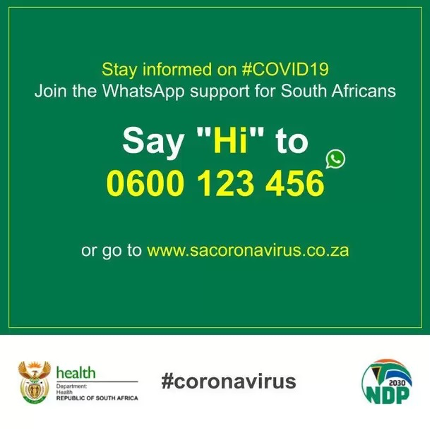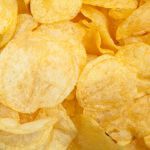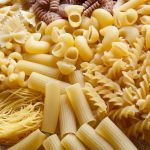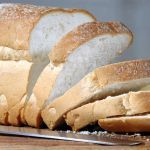Alta Cloete's Blog: www.altacloete.wordpress.com, page 21
March 24, 2020
Wees slimmer as jou slimfoon!
[image error]My oudste trek nou heel toevallig met sy blog by die maniere waarop ons tegnologie kan bestuur:
The smartphone is one of the sharpest parts on the double-edged sword of the digital revolution.
It put the world at our fingertips, but, in so doing, it created the most distracted and overwhelmed generation ever.
As always, today’s post is all about swiping right on the good and left the bad.
Notifications
As the world is finally cracking down on smoking, saving millions of lives, a new addiction is quickly filling that void: notifications.
Addiction is horrible for the user, but great for sales and even better for profits. Tobacco companies exploited this despicable marketing strategy for decades. Now it’s the turn of app developers.
And notifications lie at the heart of this digital addiction: that hypnotic “ping” or alluring little number on an icon telling you that someone liked the selfie you just posted.
Indeed, notifications are highly addictive and extraordinarily distracting.
Turn them off.
All of them (including email).
Your phone should only demand your attention for calls, texts and important reminders.
Addictive apps
There are countless apps out there that essentially sell distraction. Why on Earth would the most distracted generation in history pay good money for more distraction?
Simple: addiction.
Here’s a simple 3-step digital detox strategy:
Classify: Carefully consider each installed app and classify it as either essential or addictive.
Clean: Delete all addictive apps without which you’ll still be able to breathe.
Rearrange: Shift apps around as follows:
Essential apps on the home screen
Non-classified apps on the next screen (so you have to swipe at least once to see them)
Addictive apps you literally can’t live without on the last screen (so they’re multiple swipes away)
Inefficiency
A smartphone is great for getting information on demand, but there are many tasks where your PC is a way better tool.
Here are three examples of badly inefficient smartphone tasks:
Writing longer messages, emails or documents.
Doing serious online research (you phone is OK for some of life’s big questions like why dogs eat grass and cats are scared of cucumbers).
Online shopping.
Who owns who?
Do you own your phone or is it the other way around? Be honest now…
If you’re in full control of when you use this digital tool, you’re the owner and all is well.
If this digital tool regularly takes control of your actions, you’re the owned and have a serious problem.
Rule your phone with an iron first that will make the world’s worst dictators squirm. There should be no doubt about who’s the boss 
March 21, 2020
Emosionele oorlewing in die tyd van Korona
Was jou hande! Bly by die huis!
Moenie aan jou gesig vat nie!
Ja, instruksies oor hoe om die verspreiding van die virus te beperk, kom van alle kante op ons af.
Soms is daar ’n paar instruksies op die lysie wat vaer is, moeiliker om vas te vat, ingewikkelder om uit te voer: Bly kalm! Moenie paniekerig raak nie!
Ja, die fisieke sy van enige situasie is dikwels makliker om te hanteer as die emosionele aspekte. Ons is nou eenmaal geneig om ons fisieke welsyn bó ons emosionele gesondheid te stel. As ons in hierdie tyd egter nalaat om ook na ons geestesgesondheid om te sien, kan die pandemie merke op ons laat wat ons nog lank ná die fisieke bedreiging verby is, kan affekteer.
Vir diegene van ons wat saam met ’n geestesiekte leef, is dit ekstra belangrik om in hierdie tyd noukeurig na onsself om te sien. En nee, dis nie selfsugtig om eerste aan jouself te dink nie. Dis ons verantwoordelikheid om mooi na onsself te kyk, juis sodat ons ook in staat kan wees om ’n wyer bydrae te lewer, op watter maniere ook al in ons situasie van toepassing is.
As iemand wat saam met depressie en angs lewe, moes ek die afgelope tyd mooi introspeksie doen en besin oor hoe ek hierdie uitdaging gaan hanteer. Want ja, soos met alles in die lewe, het ons ’n keuse hóé ons op die virus gaan reageer.
Ek noem graag ’n paar punte wat vir my as belangrik uitstaan. Ek beweer hoegenaamd nie ek kry dit alles reg nie, maar dit gee my iets om op te fokus en na te streef.
Indien jy saam met ’n geestesiekte leef, wees in hierdie tyd ekstra op jou hoede vir ’n insinking. Neem jou medikasie, gebruik elke moontlike ondersteuningstelsel, doen toegewyd die dinge wat jy weet jou kan help.
Maak seker dat jou inligting korrek is en dat jy nie onnodig ontsteld raak oor onbetroubare “feite” nie.
Moenie elke nuusbrokkie wat jy ontvang, outomaties wyd en syd aanstuur nie. Neem ’n oomblik om te dink of dit werklik nodig en nuttig en bowenal korrek is.
Spreek mense aan wat onsinnige/foutiewe/dwase/opruiende inligting rondstuur. Sorg dat die verspreiding daarvan by jou stop.
Konsentreer op inligting waarmee jy iets kan doen. Is dit werklik noodsaaklik om die verloop van die virus in elke liewe land noukeurig dop te hou?
Wees ekstra versigtig op sosiale media. Ja, dit kan wondere verrig in ’n tyd van selfisolasie om met mense in kontak te bly. Maar pasop vir te veel skermtyd, te veel memes, te veel brokkies inligting waarmee jy nie werklik iets kan doen nie.
Bestuur wat jy op sosiale media sien. Onthou van die Unfollow-knoppie op Facebook. Skakel “vriende” uit wat ontstellende goed rondstuur.
Dink ’n oomblik voor jy memes en skakels deel. Is dit waar? Is dit nodig? Is dit nuttig?
Neem die besluit om op enige denkbare manier ’n positiewe bydrae tot die situasie te lewer. Selfisoleer waar moontlik, werk van die huis af indien moontlik, was jou hande. Moenie dink jou klein bydrae is nie belangrik nie.
Positiwiteit beteken nie ontkenning nie. Ons moenie hierdie ding onderskat nie. Maar ons moet ook nie so beangs raak dat ons ons greep op die werklikheid verloor nie.
Moenie al jou aandag op die verloop van die virus toespits nie. Om ’n bal-vir-bal-verslag van die wêreldwye verloop van die pandemie te volg, kan tot geweldige angs lei. Besluit liewer om byvoorbeeld een of twee keer per dag op hoogte van sake te kom en daarmee te volstaan. Onthou, daar is nog ander dinge in die lewe ook wat ons aandag nodig het.
As jou gejaagde lewe hierdeur tot stilstand gedwing word, benut die kans om na binne te draai en ’n bietjie te besin en stiller te word.
Gee aandag aan jou geliefdes se emosionele toestand. Dra veral sorg dat kinders en bejaardes nie oorval word met die soort inligting wat tot paniek kan lei nie.
As jou lewe dalk ’n bietjie leeg is, gebruik die kans om te besin oor waar jy ’n positiewe bydrae kan lewer. Ook wanneer hierdie tyd verby is.
As jy ’n ietwat selfsugtige persoon is, gebruik die geleentheid om wyer as jou eie heil te probeer dink. Jou beloning kan groot wees.
As jy ’n hoogs sensitiewe persoon (HSP) is, aanvaar dat die emosionele impak van die situasie op jou sterk gaan wees en kyk ekstra mooi na jouself. (Jy kan hier ’n aanduiding van jou sensitiwiteit kry: https://hsperson.com/test/highly-sensitive-test.)
Fokus doelbewus op dinge om voor dankbaar te wees. Daar is áltyd iets om voor dankbaar te wees.
Gebruik die geleentheid om gedagtigheid (bewustelikheid, “mindfulness”) te beoefen. As jy nie vertroud met die begrip is nie, lees gerus hier: https://mindfulness.org.za.
Meditasie hang nou saam met mindfulness. Nee, jy hoef nie ’n Boeddhis te word of jou lyf in onmoontlike posisies te knoop nie. Meditasie is eintlik net ’n manier om uit jou knaende gedagtes te kom en op jou sintuiglike ervaring te fokus. Gereelde meditasie kan help om kalmte en irritasie te verlig. Op YouTube is massas meditasies van verskillende lengtes beskikbaar. Insight Timer is ’n toepassing wat baie goed werk om jou aan te spoor om elke dag ’n tydjie aan meditasie af te staan.
Asemhalingsoefeninge is fisiek vir jou goed, omdat jy meer suurstof inneem, maar kan ook wondere vir ’n onstuimige gemoed verrig. Talle oefeninge is op die internet beskikbaar. Die kernbeginsel om angs te verminder, is om jou uitaseming langer as die inaseming te maak. Asem byvoorbeeld vir vier tellings in, hou jou asem vir nog vier tellings in, asem uit vir ses, hou vir twee. Herhaal. Glo my, dit werk!
Oefening is een van die heel beste stresontlaaiers wat daar is – enige oefening wat vir jou werk en op lang termyn volhoubaar is. Joga kan baie ontspannend wees. Selfs net ’n paar strekoefeninge bring voordele.
Probeer om elke dag (op ’n veilige plek) in die natuur uit te kom, al versorg jy net ’n enkele plant op jou balkon.
Musiek – enige musiek wat jou hart bly maak – verlig spanning en bring vreugde. Verskeie nuwe stromingskanale is alreeds beskikbaar. https://www.vulture.com/2020/03/coronavirus-the-metropolitan-opera-to-stream-free-operas.html?utm_campaign=nym&utm_source=fb&utm_medium=s1&fbclid=IwAR1dxV-eFnH-ey1f20k1454JJiGyRmS6aOB26q65bfPZZm1WgPGQHMwmkzQ.
Enige vorm van kuns wat tot jou spreek, kan jou nou ekstra baie help. Daar is al reeds wonderlike goed aanlyn beskikbaar. https://www.fastcompany.com/90475447/stuck-at-home-because-of-coronavirus-how-to-get-your-art-and-design-fix-from-your-couch.
Dis nou jou kans om vir ontspanning te lees. Maak seker jy lees nie iets wat terneerdrukkend is nie. Lekkerleesboeke is wat ons nou nodig het. Kyk gerus op Facebook by “Kom ons lees weer Afrikaans”. (https://www.facebook.com/groups/46583772414) en Lekkerleesboekrak (https://www.facebook.com/groups/lekkerlees) vir inspirasie. Vir die kinders is daar Afrikaanse boeke by https://www.facebook.com/groups/1435466360108982.
Dit mag wees dat hierdie pandemie die wêreldoorlog van ons geslag is. Maar is dit nie wonderlik dat ons almal (hopelik!) aan dieselfde kant veg nie? Konsentreer daarop om jóú deeltjie in hierdie groot veldslag te doen.
Dwarsoor die wêreld maak mense tans groot en klein opofferings om die virus te help bekamp. Moenie dink jóú opoffering en ongerief is die belangrikste nie. Oppas ook om na almal se hartseer stories oor ontwrigting en ongerief te luister. Konsentreer op dinge waaraan jy iets kan doen.
Probeer om verby jou eie ongerief en vrees (ja, ons is almal bang – erken dit maar) te kyk en die groter prentjie raak te sien. Elkeen van ons kan ’n bydrae lewer om hierdie ding hok te slaan.
Dis bekend dat skoonheid dikwels uit lyding te voorskyn kom. Kom ons verlig mekaar se emosionele lyding op elke denkbare manier en sien saam uit na die groei en verryking wat uit hierdie tyd na vore kan kom.
Lidi de Waal (https://www.facebook.com/kalaharies) sien dit so:
in hierdie tyd van histerie en angs
in hierdie tyd van binnetoe leef
en die buitewêreld uitsluit
laat ons tog probeer
om ons liefde uit te dra en nie ons angs nie
om ons omgee te gee
en nie ons bitterheid nie
ons vreugde te gee en nie ons ellende nie
ons optimisme en nie ons twyfel nie
as jy jou oop liefdevolle hart wys
sal mense en diere
en die hele universe jou goodwill aanvoel
dis hierdie dinge
wat die heelal oplig en voed
as jy ’n verskil wil maak
as jy jou lewe wil laat saakmaak
wys te midde van als wat skeefgeloop het
steeds jou beste kant aan die wêreld.
Lidi se wens is ook my wens vir jou!
March 19, 2020
Die ooreenkoms tussen kos en inligting!
My seunskind se blog trek nou heel toevallig by die belangrikheid daarvan om die inligting te beheer wat na jou toe kom en seker te maak jy stel jou nie aan goed bloot wat jou net ontstel en waaraan jy niks kan doen nie.
[image error]The digital revolution is the dominant influencing factor in our lives today. It’s impact is so great that the whole of next week will be dedicated to digital mastery.
But before we get to that, let’s take a bit of a detour and talk about diet…
Information: food for your mind
The previous post introduced the striking similarities between food and information.
Just like nutrient-rich food nurtures your body, wisdom-rich information nurtures your mind. And of course, on the dark side, we find empty calories and empty information.
The good, the bad, and the useless
Distinguishing between good and bad information is easy:
If it takes your mind to creative places that can genuinely benefit your life (or the lives of others), it’s good. If it gets you stuck in a distressed or distracted state with no positive outcome, it’s bad.
Good information is like nuts, seeds and berries – super tasty and very good for you. Bad information is like a tub of cheap ice cream – not really all that great, but for some reason you can’t stop eating.
And then there’s the useless. This is the mindless flipping through TV channels, the purposeless scrolling on Facebook or the random YouTube adventures. It’s primary cost is time.
In terms of our food analogy, useless information is like filler carbs – not good, not bad, just there. And just like filler carbs, too much of it can crowd out your capacity to consume the good stuff.
Treat your information like food
This analogy is very interesting to play with in day-to-day life.
Does the information you consumed today remind you more of a green salad or a deep-fried doughnut?
Are there perhaps some signs of addiction to your deep-fried doughnut digital treats? Or perhaps an information snacking problem? Do you know where to find the green salads of information?
December 19, 2019
Gesonde eetgewoontes!
[image error]
We all have a pretty good idea of what we should and shouldn’t eat. The real challenge is actually implementing this common sense, consistently.
That’s why the last two weeks were dedicated to strategies for building permanent healthy eating habits, allowing optimal nutrition to happen naturally. Let’s summarize how this can be done.
The checklist
There are five categories of foods that should be an integral part of healthy living. To automate our consumption of these foods, we need to maximize taste, practicality and affordability. Here’s how this can be done:
Nuts, seeds and berries: Here we focused on maximizing the practicality and affordability of this surprisingly tasty superfood combo, particularly through bulk purchases of seeds.
Raw green veggies: These green nutrient bombs taste rather bland, but things like a green drink and smart combinations with other tasty foods can make them regulars in your diet.
Cooked veggies, mushrooms and beans: This strategy revolves around the use meat and other flavors to include surprisingly large quantities of these colorful bits of health into cooked meals.
Fish and eggs: The convenience of smoked and canned omega-3 fish and scrambled eggs or omelettes make these high quality protein sources easy to include.
Avocado (and other fruit): Here we discussed the fine art of avocado ripeness management together with several ways to make fruit consumption even easier.
Next, we need to keep self-destruct foods out of our lives. A strong defense against the world’s worst foods that lurk around every corner in your local supermarket looks like this:
Refuse to pay for self-destruction: Trading time, effort, vitality and life expectancy for fleeting endorphin highs is a truly terrible deal. Realizing this on a deep level is a great first layer of defense.
Healthier snacking: Sometimes really tasty treats can actually have some longer-term benefits. For these rare occasions, choosing healthier alternatives makes all the sense in the world.
Home-made meals: Taking care of your health becomes a lot easier when you take direct control of what goes into your body. Home-made food also makes overeating much less likely.
Whole foods: Buying more whole produce is a great way to keep self-destruct foods out of your life. Getting into the habit reading food labels can also add many good years to your life.
So there you have it. These strategies combine very nicely to build healthy nutritional habits that last a (considerably longer) lifetime 
December 5, 2019
Recap: The world’s best and worst foods
The checklist
Last week, we discussed five groups of superfoods that should be regulars in any healthy eating regime:
Nuts, seeds and berries: The unbeatable breakfast combo.
Raw green veggies: The nutrient density champions.
Cooked veggies, mushrooms and beans: The surprisingly tasty key to healthy warm meals.
Fish and eggs: The protein kings.
Avocado (and other fruit): The perfect combo of nutrition, taste and convenience.
Following our discussion of these champion foods, we ventured into the four darkest corners of the food spectrum:
Empty calorie carbs: The “White Death” and its spawn.
Empty calorie fats: The White Death’s greasy relatives.
Convenience-first foods: The master instigators of overeating on unhealthy foods.
Excessive meat and bread: The beloved staples where moderation is vital.
You can add many great years to your life by turning the best foods into a habit and building strong defenses against the worst foods. This will be our focus over the next two weeks.
December 4, 2019
The world’s worst foods: Convenience-first foods
[image error]OK, what do I mean by convenience-first foods? Well, these are all those foods that are made with convenience as the first priority. An obvious example is fast food.
Wow, this is getting tough… First I attack the great taste of empty calorie carbs and fats and now I attack convenience. But there are good reasons behind today’s post as well. Let’s take a look.
What’s so bad about convenience-first foods?
Foods that are made for convenience first generally prioritize taste second, budget third, and health dead last. This is a serious problem.
Like the empty calorie carbs and fats we discussed over the past two days, this prioritization creates a badly lopsided calorie/nutrient ratio. As a result, your body gets plenty of fuel, but no maintenance – perfect for contracting serious lifestyle diseases like heart attacks, stroke, cancer and diabetes.
But we’ve covered this problem in detail on Monday. The other big reason to avoid convenience-first food is that it makes overeating far too easy. A totally lopsided calorie/nutrient ratio is bad enough, but when this is combined with a calorie overload, it gets really scary.
Any food that does not place health first should have some friction built into the process of eating it. Because of our primitive cravings, this friction is critical for staying at a healthy weight. Convenience-first foods remove all this friction, driving the global obesity epidemic.
Lastly, the processing required to make convenience foods so convenient often destroys much of the remaining nutrients and/or introduces some potentially dangerous additives. Rapid cooking (frying and deep frying), typical of fast foods, also tends to destroy nutrients and add trans fats and other toxins.
Some examples of convenience-first foods
Anything that places convenience before health falls in this category. Here are some examples:
Almost all fast food
Many ready meals
Frozen pizza
Sandwich spreads
Processed meats
Anything fried in vegetable oil (olive oil is OK)
Yes, convenience is important in today’s world where everyone is so super-busy. But it just takes a little bit of thinking to make healthy eating super convenient. We’ll get to this next week…
December 2, 2019
The world’s worst foods: Empty calorie fats
What’s so bad about empty calorie fats?
Just like empty calorie carbs, empty calorie fats give your body plenty of fuel, but no nutrients to repair the damages from burning this fuel. In the long run, this causes serious damage to the body – much like an engine that is run without oil changes and other maintenance.
There’s one type of empty calorie fat that is especially hazardous: trans fats. These fats are mostly found in margarine, shortening and vegetable oil – and any food that contains (or is fried in) these ingredients.
Luckily, the authorities are acting to outlaw this dangerous ingredient, but it’s worth checking the labels of fatty foods just to be sure.
After trans fats, saturated fat is the most problematic. Food labels also state the amount of saturated fat in any food, so this information is readily available to you.
Most sources put the safe limit of saturated fat at or slightly below 20 g per day. Go beyond that, and you will increase your risk of heart disease. Cancer is also associated with diets high in saturated fats.
Other fats (mono and polyunsaturated fats) are generally quite good for you and can represent 30-40% of your calorie intake without problems.
Some examples of empty calorie fats
Any food where the label lists plenty of fat (especially saturated fat) and virtually no nutrients fall in this category. Here are some examples:
Chips
Cake and icing
Cream and ice cream
Biscuits and crackers
Mayonnaise
Arguably also milk chocolate and bacon
Much like empty calorie carbs, the big problem is that these foods are truly delicious. Therefore, we’ll spend some time later in this chapter to build our defenses against these carefully engineered addictions.
But don’t worry, there won’t be any expectations to never eat any delicious treat ever again 
December 1, 2019
The world’s worst foods: Empty calorie carbs




After last week’s exploration of the world’s best foods, we must now turn our attention to the dark side of the food spectrum: that place where many good life years are sacrificed for fleeting endorphin highs.
Empty calorie carbs are the best place to start, since they represent the largest group of nutrient-free hyper-palatable carriers of degenerative disease.
What’s so bad about empty calorie carbs?
Our bodies need energy to live and live well. We cannot absorb energy from the sun like plants do. Instead, we get our energy from food which, directly or indirectly, comes from the sunlight captured by plants.
Unfortunately, the process of turning food into useful energy in our bodies is rather messy. Like any chemical processing facility, this conversion process leads to plenty of wear & tear and produces lots of waste products, some of which are quite toxic.
Repairing the wear and tear, removing the waste, and neutralizing the toxins is a full-time job. And these maintenance functions depend on a wide range of nutrients that occur naturally in all whole foods.
The problem is that our supermarkets are filled with shiny packets of super tasty foods that offer lots of calories, but no nutrients. In other words, these foods give your body plenty of fuel, but zero maintenance. It’s much like running an engine on some low-grade fuel and never servicing it.
Empty calorie carbs further fuel this fire by bypassing the body’s natural satiety response. These carbs are mostly simple sugars that can be broken down and absorbed very easily. Hence, the feeling of fullness arrives very late. In addition, these foods trigger a chemical response in the body (sugar rush) that easily turns into an addiction, driving additional over-consumption.
Lastly, although empty calorie carbs don’t offer nutrients, they often come with plenty of additives, such as preservatives, sweeteners and colorants, that may have significant adverse health effects.
The best known lifestyle disease caused by empty calorie carbs is type-2 diabetes, but it is also linked to several other big killers like heart disease and cancer.
Some examples of empty calorie carbs
This basically includes all kinds of snacks with lots of sugar or other refined carbohydrates (a.k.a. the White Death).
Soft drinks
Candy
White bread
Cake and cookies
Pastries
Sugary breakfast cereals
These hyper-palatable treats are engineered to maximize our cravings, forcing billions to get the calorie/nutrient ratio all wrong.
Hopefully, society will eventually evolve to the point where these foods are taxed to correctly reflect their true cost and labeled with health warnings like cigarettes are today. Until that day, we’re on our own against these carefully engineered addictions
November 21, 2019
Paraprosdokians! :)
[image error]Ek weet ongelukkig nie waar die oorsprong van hierdie stuk lê nie, maar dis te skerp om nie te versprei nie!
The first time I heard about paraprosdokians, I liked them. Paraprosdokians are figures of speech in which the latter part of a sentence or phrase is surprising or unexpected & is frequently humorous. (Winston Churchill loved them.)
1. Where there’s a will, I want to be in it.
2. The last thing I want to do is hurt you…. but it’s still on my list.
3. Since light travels faster than sound, some people appear bright until you hear them speak.
4. If I agreed with you, we’d both be wrong.
5. We never really grow up…. we only learn how to act in public.
6. War does not determine who is right, only who is left.
7. Knowledge is knowing a tomato is a fruit. Wisdom is not putting it in a fruit salad.
8. To steal ideas from one person is plagiarism. To steal from many is research.
9. I didn’t say it was your fault, I said I was blaming you.
10. You do not need a parachute to skydive. You only need a parachute to skydive twice.
11. I used to be indecisive, but now I’m not so sure.
12. To be sure of hitting the target, shoot first & call whatever you hit the target.
13. Going to church doesn’t make you a Christian, any more than standing in a garage makes you a car.
14. You’re never too old to learn something stupid.
15. I’m supposed to respect my elders, but it’s getting harder & harder for me to find one now.
Boikot Black Friday!
[image error]Take part in the “Green Friday” consumer strike to save the planet on November 29th! #GreenFriday
Major retailers use “Black Friday” as an opportunity to sell us an ideology of wasteful and exploitative consumerism. Many of us (all around the world) have seen or experienced the dystopian phenomenon of rabid shopping craze on this day promoted by the global corporations who continue to plunder the Earth to bring us next years landfill.
Each year we are sold products built to break or become unwanted, out of fashion, due to planned redundancy so we are forced to keep perpetually consuming and extracting new resources; all to fuel the suicidal capitalist contradiction of infinite growth on a finite planet.
Black Friday sucks the life out of small businesses, who cannot compete against this ruthless price cutting.
This year, on November 29th we are calling on you to take a stand for the planet and your local community by refusing to give any of your hard earned money to this corrupt financial system. By taking part we will be affecting these companies where it hurts them the most, in their profit margins.
Looking for something else to do on the 29th?
Take part in climate strike protest in your area or help out with mutual aid projects such as food not bombs, repair workshops and free shops being organised by Earth Strike and allied groups.
Together we can build the new world in the shell of the old!
“Modern industrial society robs us of community with each other and community with the earth. This creates a great longing inside us, which we are taught to fill with consumer goods. But consumer goods, beyond those needed for basic comfort and survival, are not really what we crave. So our appetite is insatiable, and we turn to more and more efficient and dehumanizing methods of production to make more and more goods that do not satisfy us. If workers really had control of the factories (and I say this as a former factory worker), they would start by smashing the machines and finding a more humane way to decide what we need and how to produce it.” – Judi Bari http://www.judibari.org/revolutionary-ecology.html
#EarthStrike #GreenFriday #FFF #ConsumerStrike #BND #BuyNothingDay



